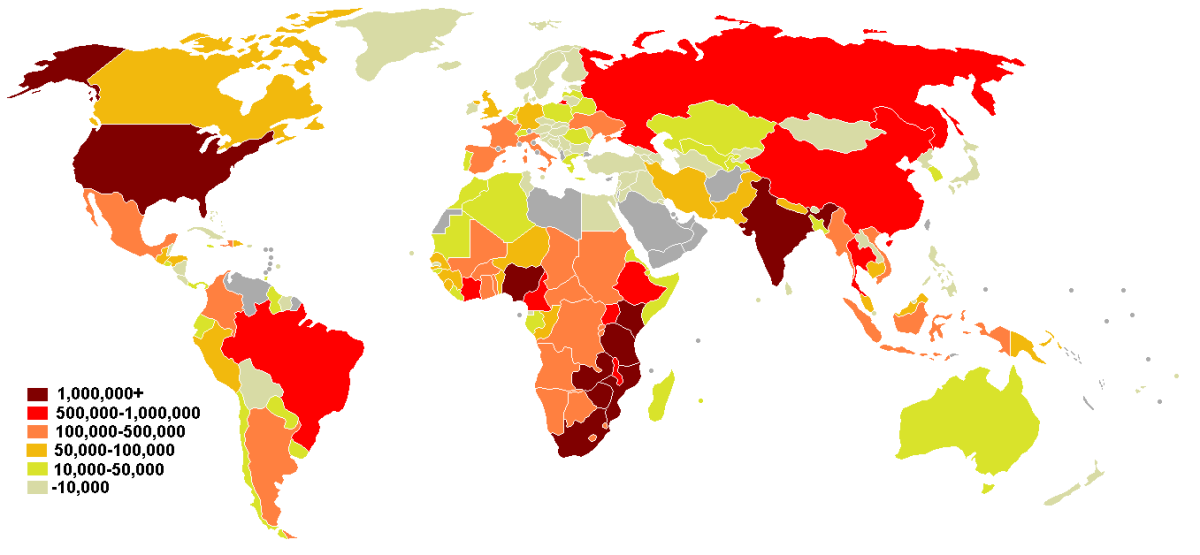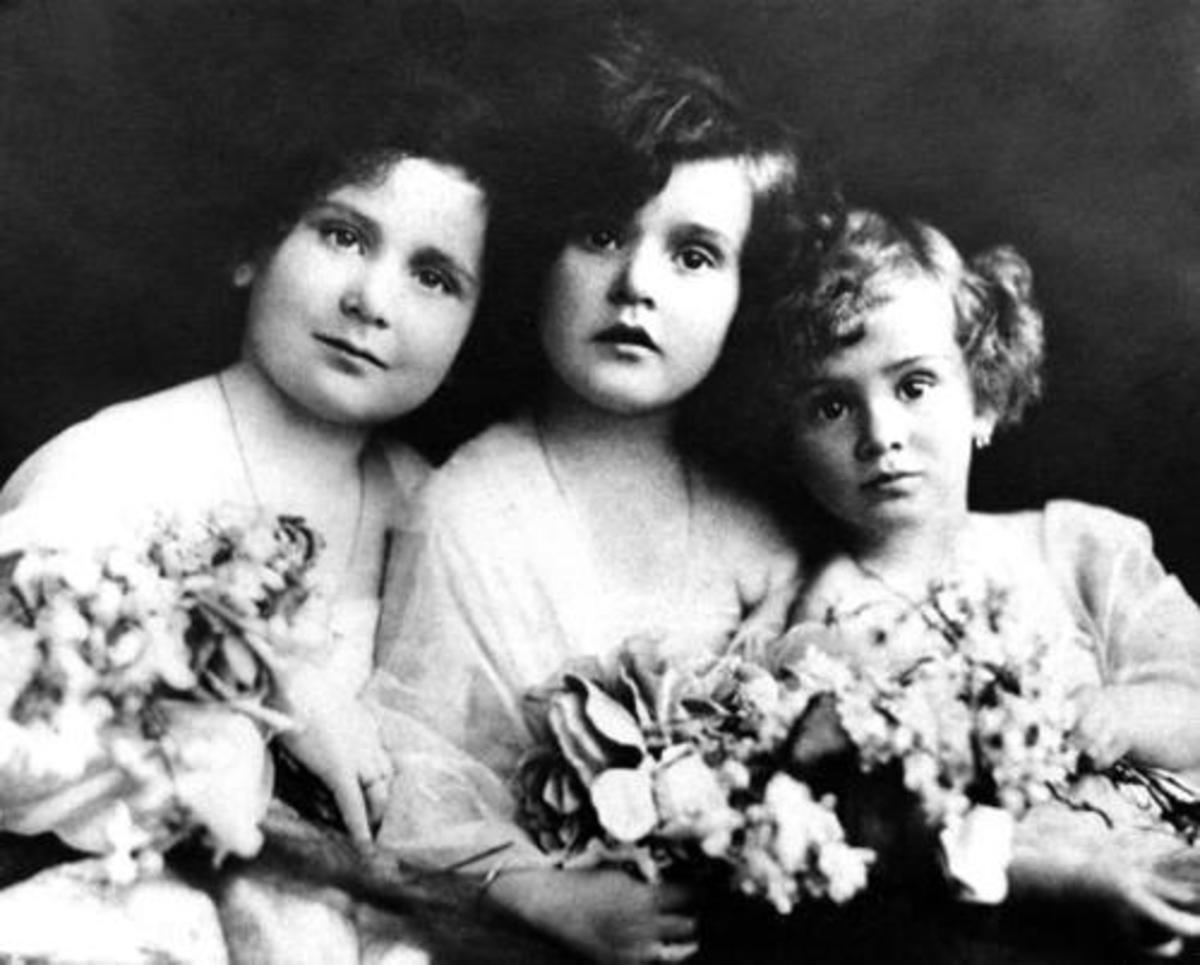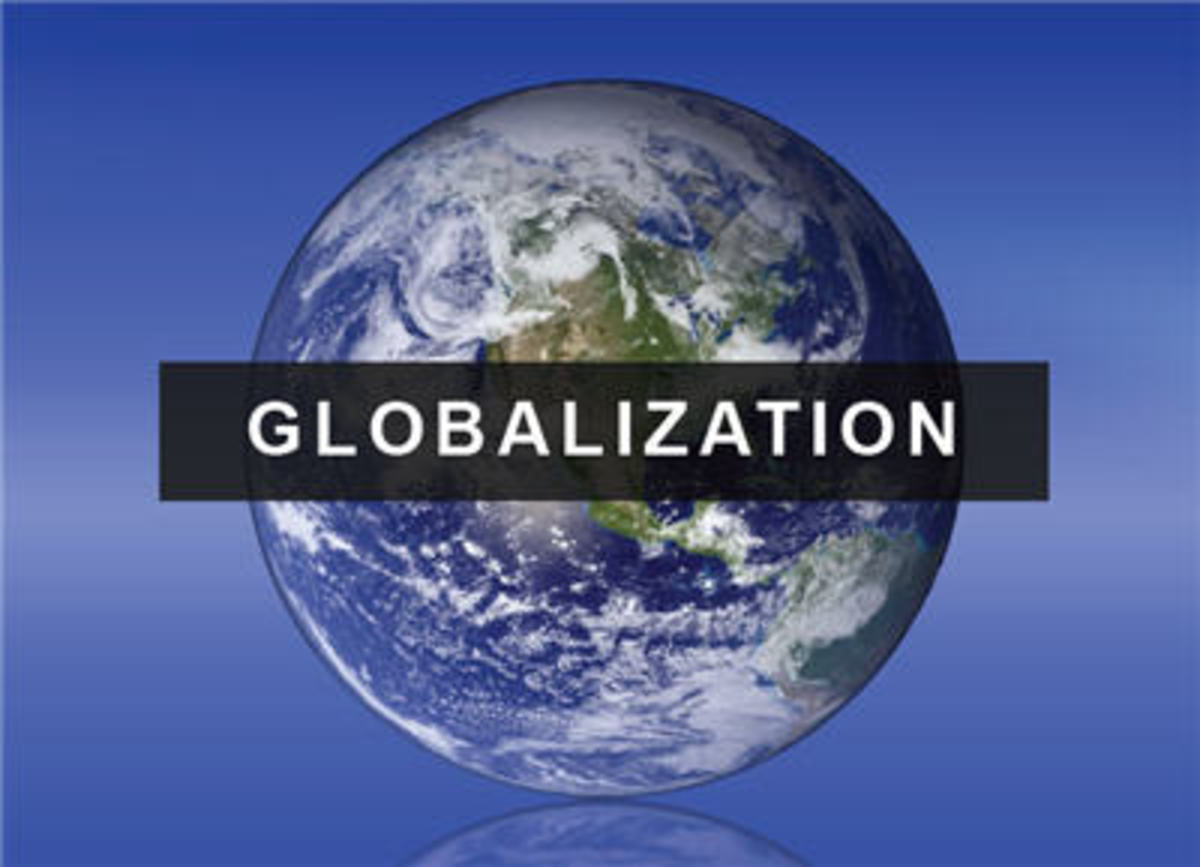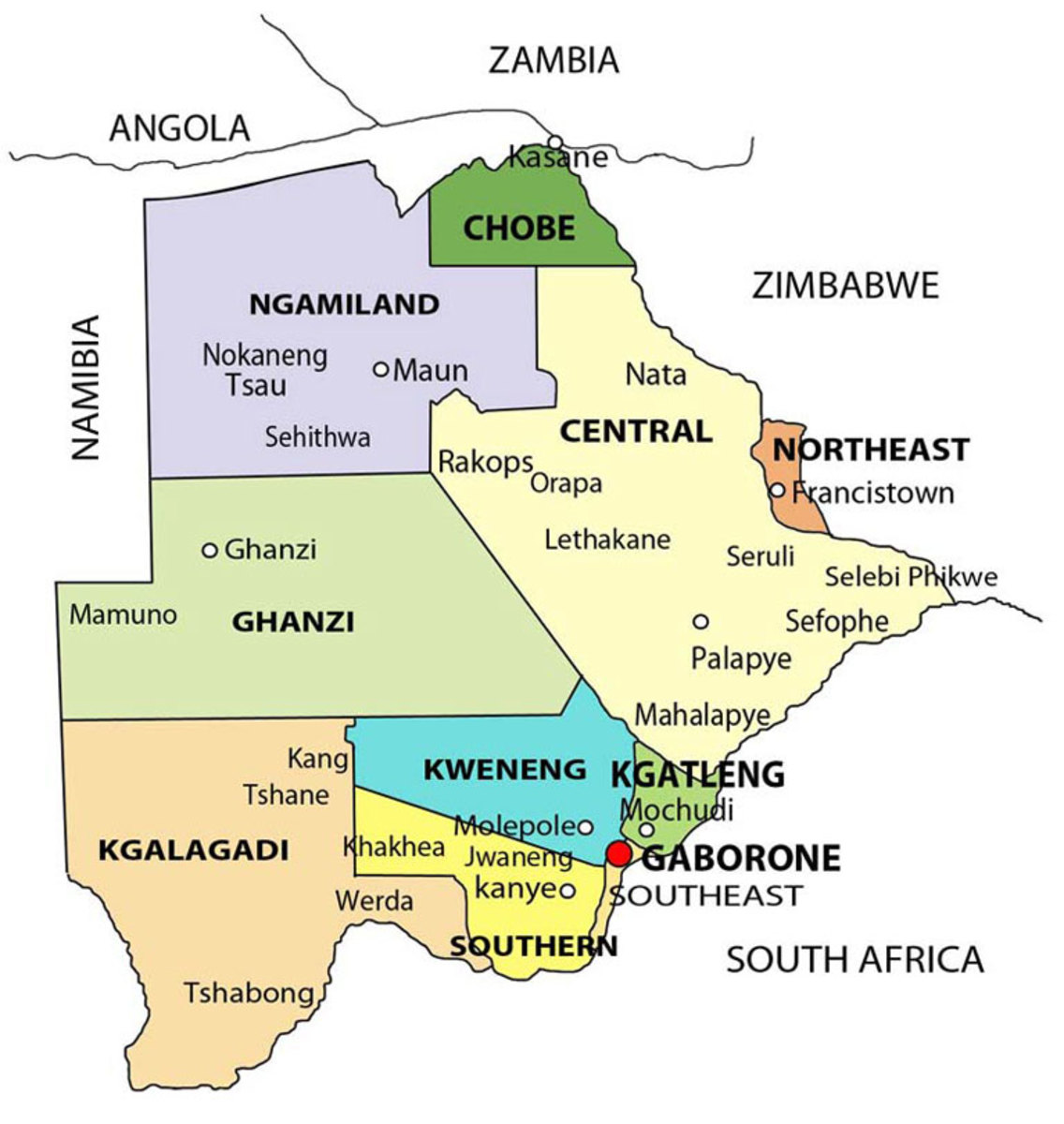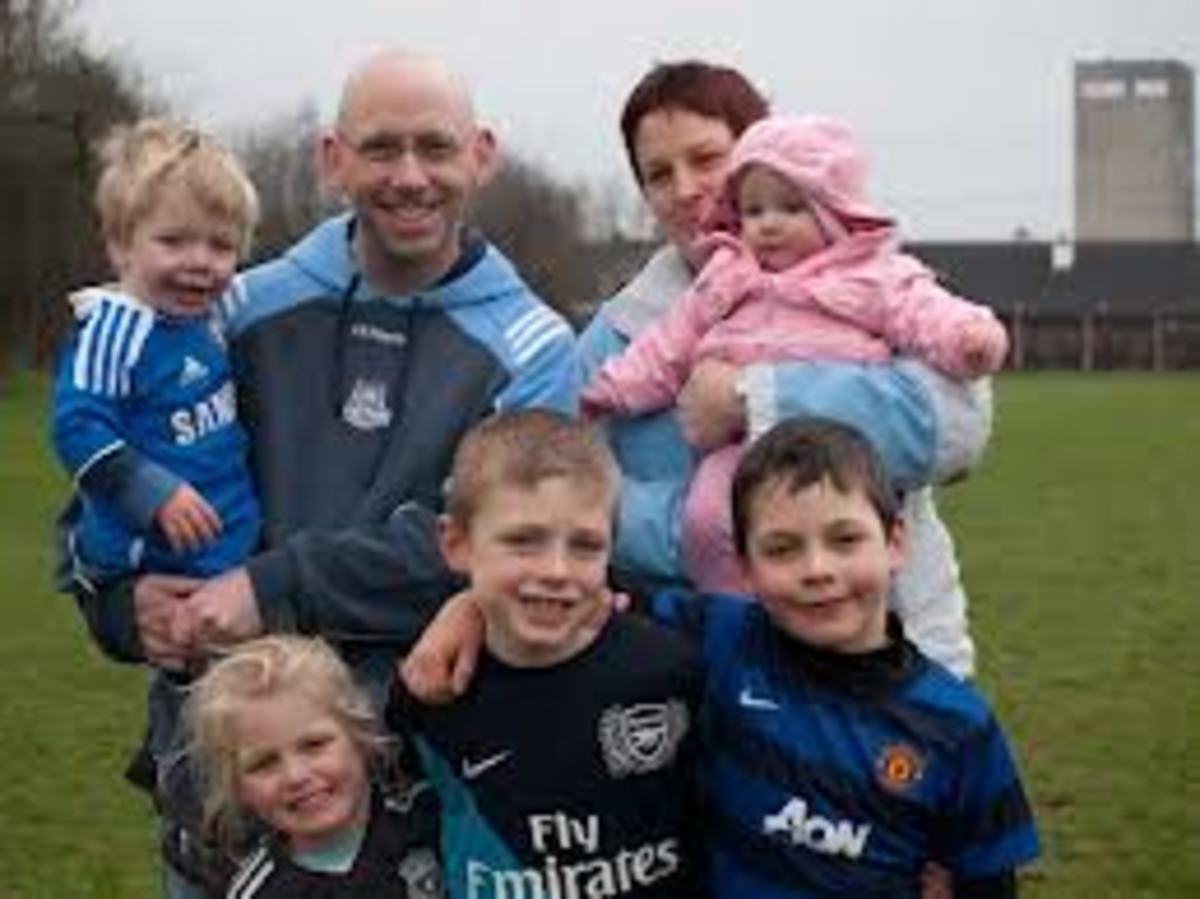Child Marriages Feed Poverty In The Developing Countries
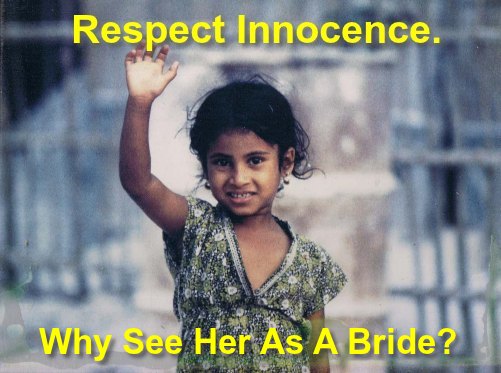
Child Marriages Cover-Up Lifetime Abuse Of Girls
"Child marriage is an appalling violation of human rights and robs girls of their education, health and long-term prospects." – Dr. Babatunde Osotimehin, UNFPA.
Every year about 14 million girls are locked into marriages, often with much older men. The tradition of “marriage” provides cover for the tale of life-long physical and sexual abuse of the girl. It legitimizes denial of her human rights and dignity. From a broader perspective, it is just a part of the ongoing discrimination that begins with her birth and continues till she dies. Child marriage is defined as a marriage before age 18.
It is perhaps the harshest symbol of male dominance over the female who are viewed as mere objects of lust gratification. In this information age, we still have societies where rich tycoons in seventies hunt for virgins teenage girls for wedlock. Sounds sick, but all you have to do is to look for where a lot of young girls end up in the Gulf countries after disappearing from Bangladesh or India. Rest assured, it is part of the lifestyle of the rich. There are societies where rapist is exonerated and allowed to marry the victim. But we need not blame these rich lecherous characters, a lot of girls particularly in the developing countries find themselves into marriages they never intend or understand.
However, child marriage can’t be seen as a stand-alone abusive practice, but must be seen in the larger context of discrimination and violence against women and girls. It is only a proof of girls’ vulnerability that exposes them to abuses throughout their lives. According to the UN reports, the leading cause of death for girls aged between 15 and 19 years old in developing countries is pregnancy-related complications – their immature body can't properly cope with the physical demands of carrying a baby. Stopping child marriages is the key to achieving UN’s Millennium Development Goals (MDGs) of improving child mortality and reducing maternal deaths directly. Early marriages not only fuel population growth but also sustain poverty.
The situation is nothing but a life-long trap in the cycle of poverty. The social pressure, especially to produce male offspring, soon after marriage is another tormenting aspect of life in many societies. As a result of the highly unequal gender equation and patriarchal family structures the young bride are left with few choices and little control over their own bodies.
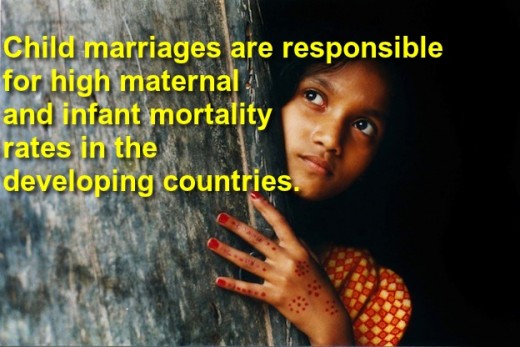
UNFPA Report
South Asia And Sub-Saharan Africa Are Global Centers Of Child Marriages
Child marriage transcends regional and cultural boundaries and persists to varying degrees around the globe. It is commonly measured by the percentage of women aged twenty to twenty-four who report being married before eighteen. The highest rates are found in South Asia and West and Central Africa, where an estimated two out of five girls are married as children. Across all developing countries, an estimated one in three girls is married before turning eighteen, and one in nine before fifteen. However, in terms of absolute numbers, India surpasses other countries by a wide margin due to its huge population; it accounts for about 40 percent of all child marriages in the world.
Around 37,000 girls under the age of 18 are married off everyday – which translates to about 13.5 million a year. If not curbed, the numbers would go to 14 million a year by 2020 and 15 million annual by 2030. According to the UNFPA the highest prevalence of child marriage is seen in Niger, where 75 per cent of girls are married before 18, and a third are wed before age 15. Under Niger’s law, the minimum age for marriage is 15, but traditional customs often prevail in villages.
In the Central African Republic and Chad the rate of child marriage is 68 percent, it is 66 percent in Bangladesh, and 47 percent in India. In Afghanistan 46 percent of girls are married before 18; 60-80 percent of those girls were forced into the marriages by their parents. In Nepal, 41 percent of girls end up as child brides.
According to a Human Rights Watch report, approximately 14 percent of girls in Yemen, the Arab world’s poorest countries, get married before the age 15, and 52 percent wed before they turned 18. In the Middle East, Saudi Arabia and Yemen are the only Arab countries that do not have laws that set a minimum age for marriage. Yemen has recently proposed a law to set the legal age of marriage at 18 along with other reforms; it has yet to become a law.
The UN has launched a campaign to end child marriages by 2030 which means freeing the girls from poverty, ignorance and abuse at the hands of their husbands. The problem is mainly concentrated in South Asia and sub-Saharan Africa, where girls as young as 5 or 6 are married off. Despite laws setting a minimum age for marriage in many countries, social and cultural norms continue to weigh heavily and provide a semblance of legitimacy to child marriage. It legitimizes human rights violations and abuses of girls under the guise of honor, tradition and religion.
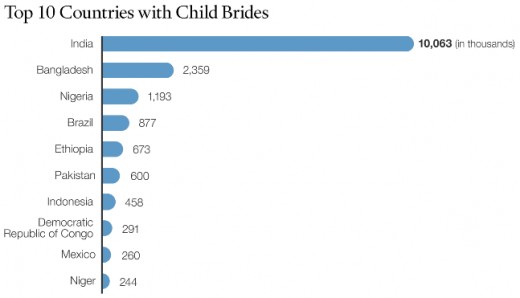
Age Of Consent And Marriage!
While international legal conventions consider 18 as an acceptable age of marriage. But many countries allow marriages at lower ages with the consent of parents or judicial authorities. About three dozen countries allow children at the age of 15 or younger to get married with parental consent. In many more countries girls are allowed to marry with consent at younger ages than boys. Clearly, early marriage is also a gendered phenomenon.
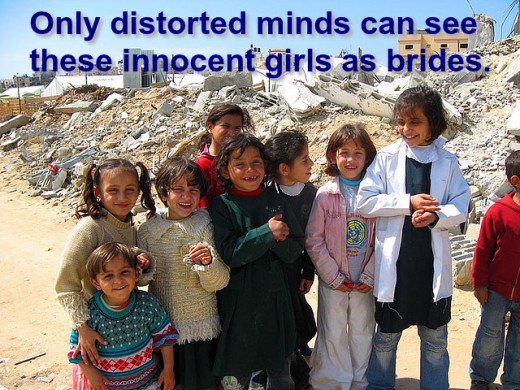
Some Child Marriage Facts
- One-third of the world’s girls are married before the age of 18
- 1 in 9 is married before the age of 15.
- At the present trend, each year about 14 million girls are married before 18.
- Girls from poor families are almost twice as likely to marry before 18 as girls in higher income families.
- Girls younger than 15 are five times more likely to die in childbirth than women in their 20s.
- Pregnancy is the leading cause of deaths worldwide for girls ages 15 to 19.
- Girls in the age group 15-19 are two- to six-times more likely to contract HIV than boys of the same age in sub-Saharan Africa.
What Prompts Early Marriages Of Girls
The Value of Brides!
Poverty, patriarchy, cultural norms, and the low social status of women and girls are the primary driving forces behind early marriage of girls, although the precise reasons differ from society to society.
Cultural Norms
Male dominance is the unwritten rule of law in most poor countries. Given the state of widespread backwardness and ignorance girls and women become easy prey to male dictates. It is taken for granted that women have to make babies and take care of the family – the only roles traditionally assigned to them.
Many cultures place an emphasis on girls' virginity, which is closely tied to a family's honor. Parents may marry off a daughter at an early age to ensure that she marries as a virgin and to prevent the shame of out-of-wedlock pregnancies. Marrying the girl means getting rid of the responsibility to “protect” her. A married girl becomes protected from male eyes of the society and her abuse is limited to that coming from just one man, her husband!
Then there are religious sects that support early marriage. For instance, in Ethiopia child marriage is embedded in the customs of Orthodox Christian communities such as those in the Amhara region, although country’s Orthodox church opposes the practice.
In Muslim communities, some follow a conservative interpretation of sharia and argue that girls can be married upon reaching maturity, which they define as puberty. However, there is debate within Islam about at the age of maturity of a girl. Others agree with the internationally recognized age of maturity, 18. Many Muslims further argue against child marriage because Islam mandates that men and women should choose their partners freely, and children are not capable to do so.
Economics
In several communities girls are seen as economic burden. For impoverished parents marrying off girls soon is the best option to get rid of the financial load. Some countries have the popular tradition of using girls as a means to settle family debt or gain financially when the husband pays dowry. In many parts of sub-Saharan Africa, bride prices (money given to the bride's parents) rise if a girl marries at an earlier age. Rich elderly men exploit young girls in these societies.
I was really in need of money and thought it was a solution for the family. – Abdul Mohammad Ali, father of a 9 year old girl in Yemen
"The man I loved did not have cows and my uncles rejected him. My husband paid 120 cows. ... I refused him but they beat me badly and took me by force to him. The man forced me to have sex with him so I had to stay there." – A South Sudanese child bride
Families in crisis situations are more likely to marry their daughters early, either to preserve the financial status of the family by shedding the economic responsibility for the girl children or in an attempt to ensure daughters’ safety from potential sexual abuse.
Crisis Makes Girls "Dispensable"
A March 2013 report from World Vision titled, “Untying the Knot: Exploring Early Marriage in Fragile States” studied countries like Bangladesh, Somaliland and Niger and found that fear of rape, premarital pregnancy, hunger, and homelessness were major drivers of early marriages. Most of the countries with the highest rates of early marriages are affected by conflict, fragility, or natural disasters. Other drivers of child marriages included lack of alternative opportunities for girls such as the lack of opportunity to go to school.
The current Syrian conflict has also unleashed another round of child marriages – gender based violence on the displaced population. Syrian refugees are marrying their daughters for financial gain as well as to lodge the girls in the safety of the marriage institution. Lecherous characters are always lurking around the refugee camps to hunt for young brides.
Who is a Child?
What Do You Think?
In Your Society What is the Prevalence of Child Marriages (Make a Guess)?
Why Girls Have So Weak Social Status?
Why Early Marriages Are Harmful
Child marriage is a human rights as well as developmental and health issue.
International conventions define 18 as the age of adulthood. Matrimony before the age of 18 is termed child marriage which is prohibited. The reasons being that children and adolescents are not mature enough to make choices about marriage, and that early marriages often lead to lasting emotional, physical, and psychological harm. Moreover, child marriage robs girls' of educational opportunities and income-earning prospects, and perpetuates poverty.
According to a United Nations Population Fund report, “When a young girl is married and gives birth, the vicious cycle of poverty, poor health, curtailed education, violence, instability, disregard for rule of law . . . continues into the next generation, especially for any daughters she may have.”
Health
Child brides are often expected to bear children soon after marriage, which makes them vulnerable to pregnancy and childbirth complications, including obstetric fistula, a condition that causes chronic incontinence and occurs commonly in young girls who give birth before their bodies have matured. According to WHO reports, pregnancy complications remain the leading cause of death among girls aged 15 to 19 in low- and middle-income countries, and those girls are twice as likely to die in childbirth as are mothers aged 20 and older. Further, babies born to adolescent or child mothers are more likely to die than those born to mothers over age 20. They tend to have lower birth weights and weak immune systems, and face higher risks of malnutrition. In areas with high infection rates, early marriage makes girls more vulnerable to HIV and other STDs.
Violence
According to UN studies, girls who marry before they are 18 are more likely to become victims of violence from their partners, with the risk increasing as the age gap between the couple gets larger. Once married, young girls suffer a traumatic initiation into sexual relationships, are put at risk of domestic violence and the chances of a career are gone almost forever.
Isolation of Girls
Marriage generally cuts-off the girl from her families and peer network and is thrust into hostile environments where she is beholden to her new husband and in-laws. This isolation can have emotionally scarring effects, particularly if the new family mistreats her and husband forces her into non-consensual intimacy. The option of divorce, even if available, is beyond her capacity because she lacks financial support. Her life becomes more miserable if her husband ditches her or dies – when she is left alone to look after her kids.
The Education Dilemma
Education generally becomes the first casualty of child marriage. This has life-long consequences and restricts their earning potentials. It further weakens their status and makes them dependent on the husband.
The high prevalence rates of child marriage correlates well with lower education for girls. A study by the International Center for Research on Women (ICRW) found that girls with no education were up to six times more likely to marry as children than girls who had received secondary education. Likewise, a UNICEF study from 47 countries found that girls with primary school education were less likely to be married than girls with no education. Therefore, child marriage feeds this vicious cycle and perpetuates the cycle of misery in the female gender.
The Poverty Cycle
As discussed above, early marriage leaves girls without the skills, knowledge and social networks to financially support their families. The effect is passed-on to the next generation and the cycle of poverty continues. There are numerous studies to link girls' education and development to larger economic benefits. As their education level increases the impact is reflected in lower child and maternal mortality rates, lower birthrates and higher female participation in the economic activities. Child marriage, then, not only adversely impacts the trajectory of young girls' lives, but also of the society and country.
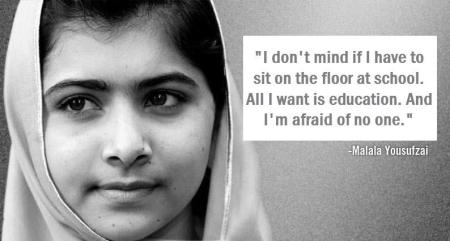
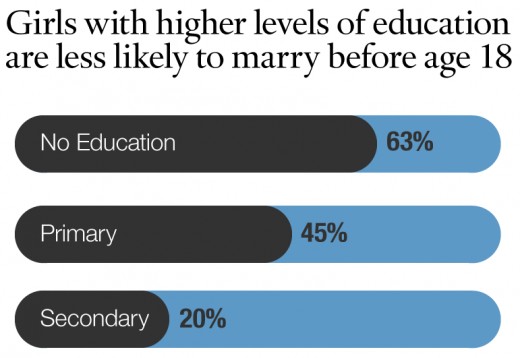
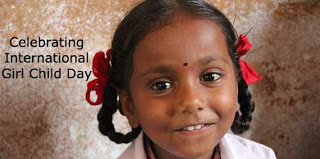
The International Day of the Girl Child
The United Nations General Assembly adopted Resolution 66/170 on Dec 19, 2011 to declare 11 October as the International Day of the Girl Child, in order to recognize girls’ rights and the unique challenges girls face around the world.
What Can Be Done To Prevent Child Marriages
Although the tradition of child marriage is entrenched in the social customs maintained by patriarchy, it can be easily seen as a problem of lack of social development, education and gender equality. Therefore, the solution lies in working from different perspectives to create an environment where child marriages are discouraged and finally eliminated altogether. Experience from around the world tells us that the following 2 broad strategies can be used at the local, national and international levels to curb the practice of child marriage.
1. Girls’ Empowerment
Promote Education
This lies at the core of the whole issue and education has been proven to be the best tool to achieve it. Both formal and informal education and skill and knowledge development play important roles.
Incentives can play a crucial role in encouraging education, if they can outweigh the hurdles that keep girls away from the school. It works well if parents have incentive to keep their daughters in schools. For instance, parents may be given some monthly cash incentive as long as the girls are attending schools. Another form of incentive pertains to delaying their marriages till they are eighteen. India has an effective Apni Beti Apna Dhan (my daughter, my wealth) scheme; it offers bonds to newborn girls that can be redeemed only if they remain unmarried until the age of 18.
Promote Reproductive Health Knowledge
A vital aspect is to give girls’ the education and information about reproductive health issues. Married girls can be targeted for regular visits to local health centers where they can share their problems and learn about various aspects of maternal and reproductive health. Such facilities, if easily accessible, are highly empowering for 'girl wives' who have little support mechanism at husbands home.
2. Changing the Traditional Mindset
Spread Awareness in the Communities
Community-based targeted programs can be highly effective in changing traditional mindset of people about the roles of women and girls in society, if done consistently over a period of time. Involvement of local leaders and parents make such programs more effective. They should be presented with the negative consequences of child marriages as well as the alternatives. There are organizations in different countries that directly work with the society.
Strengthen Laws
Laws pertaining to minimum age of marriage and against sexual violence need to be strengthened and the justice delivery mechanisms should be bolstered. A first step towards monitoring child marriages can be requiring registration of births and marriages. Such a law passed in Bangladesh in 2004 contributed to an increase in birth registrations from 10 percent to 54 percent over three years. Girls found this requirement as an effective way to uphold laws against child marriage. Regular data collection and updates go a long way in strengthening the monitoring mechanism.
Raising Diplomatic Pressure
Since child marriages work against development and human rights goals, global leaders like the US and UK and organizations such as the UN and World Bank should exert pressure on countries with high levels of child marriages. They can selectively lend support to countries that are already making efforts to prevent child marriage – like India and Ethiopia.
Conclusion
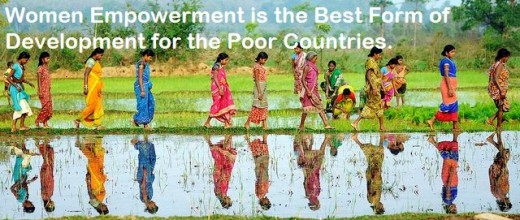
Exploring Further
- 4 yrs Old & Married In USA?
Islam Newsroom - Married Young: The Scourge of Child Brides in South Asia
Child marriage is both the symptom of a patriarchal society unwilling to let women progress and the cause of other gender-based issues such as economic marginalization and poor health care. - UN aims to end child marriage by 2030
The UN Population Fund said about 37,000 girls under age 18 are being married off daily, at a rising pace toward 14.2 million a year by 2020, and 15.1 million a year by 2030, if the trend is not curbed. - Child Marriage Sets Girls Up for a Lifetime of Abuse
Ending child marriage internationally should be a global priority and included within the post-2015 development framework.

